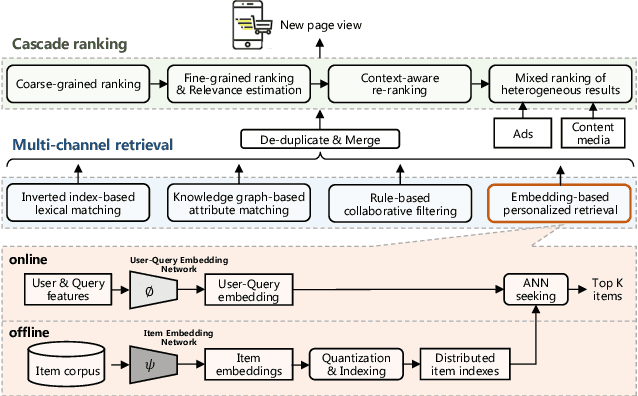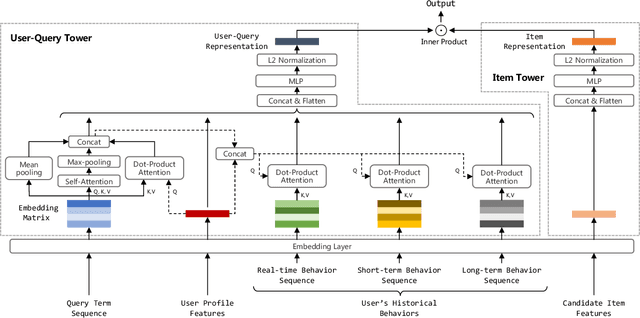Guanghao Meng
Enhancing Retrieval Augmentation via Adversarial Collaboration
Sep 18, 2025Abstract:Retrieval-augmented Generation (RAG) is a prevalent approach for domain-specific LLMs, yet it is often plagued by "Retrieval Hallucinations"--a phenomenon where fine-tuned models fail to recognize and act upon poor-quality retrieved documents, thus undermining performance. To address this, we propose the Adversarial Collaboration RAG (AC-RAG) framework. AC-RAG employs two heterogeneous agents: a generalist Detector that identifies knowledge gaps, and a domain-specialized Resolver that provides precise solutions. Guided by a moderator, these agents engage in an adversarial collaboration, where the Detector's persistent questioning challenges the Resolver's expertise. This dynamic process allows for iterative problem dissection and refined knowledge retrieval. Extensive experiments show that AC-RAG significantly improves retrieval accuracy and outperforms state-of-the-art RAG methods across various vertical domains.
One-stage Low-resolution Text Recognition with High-resolution Knowledge Transfer
Aug 05, 2023



Abstract:Recognizing characters from low-resolution (LR) text images poses a significant challenge due to the information deficiency as well as the noise and blur in low-quality images. Current solutions for low-resolution text recognition (LTR) typically rely on a two-stage pipeline that involves super-resolution as the first stage followed by the second-stage recognition. Although this pipeline is straightforward and intuitive, it has to use an additional super-resolution network, which causes inefficiencies during training and testing. Moreover, the recognition accuracy of the second stage heavily depends on the reconstruction quality of the first stage, causing ineffectiveness. In this work, we attempt to address these challenges from a novel perspective: adapting the recognizer to low-resolution inputs by transferring the knowledge from the high-resolution. Guided by this idea, we propose an efficient and effective knowledge distillation framework to achieve multi-level knowledge transfer. Specifically, the visual focus loss is proposed to extract the character position knowledge with resolution gap reduction and character region focus, the semantic contrastive loss is employed to exploit the contextual semantic knowledge with contrastive learning, and the soft logits loss facilitates both local word-level and global sequence-level learning from the soft teacher label. Extensive experiments show that the proposed one-stage pipeline significantly outperforms super-resolution based two-stage frameworks in terms of effectiveness and efficiency, accompanied by favorable robustness. Code is available at https://github.com/csguoh/KD-LTR.
Towards Robust Scene Text Image Super-resolution via Explicit Location Enhancement
Jul 30, 2023



Abstract:Scene text image super-resolution (STISR), aiming to improve image quality while boosting downstream scene text recognition accuracy, has recently achieved great success. However, most existing methods treat the foreground (character regions) and background (non-character regions) equally in the forward process, and neglect the disturbance from the complex background, thus limiting the performance. To address these issues, in this paper, we propose a novel method LEMMA that explicitly models character regions to produce high-level text-specific guidance for super-resolution. To model the location of characters effectively, we propose the location enhancement module to extract character region features based on the attention map sequence. Besides, we propose the multi-modal alignment module to perform bidirectional visual-semantic alignment to generate high-quality prior guidance, which is then incorporated into the super-resolution branch in an adaptive manner using the proposed adaptive fusion module. Experiments on TextZoom and four scene text recognition benchmarks demonstrate the superiority of our method over other state-of-the-art methods. Code is available at https://github.com/csguoh/LEMMA.
Multi-Objective Personalized Product Retrieval in Taobao Search
Oct 09, 2022



Abstract:In large-scale e-commerce platforms like Taobao, it is a big challenge to retrieve products that satisfy users from billions of candidates. This has been a common concern of academia and industry. Recently, plenty of works in this domain have achieved significant improvements by enhancing embedding-based retrieval (EBR) methods, including the Multi-Grained Deep Semantic Product Retrieval (MGDSPR) model [16] in Taobao search engine. However, we find that MGDSPR still has problems of poor relevance and weak personalization compared to other retrieval methods in our online system, such as lexical matching and collaborative filtering. These problems promote us to further strengthen the capabilities of our EBR model in both relevance estimation and personalized retrieval. In this paper, we propose a novel Multi-Objective Personalized Product Retrieval (MOPPR) model with four hierarchical optimization objectives: relevance, exposure, click and purchase. We construct entire-space multi-positive samples to train MOPPR, rather than the single-positive samples for existing EBR models.We adopt a modified softmax loss for optimizing multiple objectives. Results of extensive offline and online experiments show that MOPPR outperforms the baseline MGDSPR on evaluation metrics of relevance estimation and personalized retrieval. MOPPR achieves 0.96% transaction and 1.29% GMV improvements in a 28-day online A/B test. Since the Double-11 shopping festival of 2021, MOPPR has been fully deployed in mobile Taobao search, replacing the previous MGDSPR. Finally, we discuss several advanced topics of our deeper explorations on multi-objective retrieval and ranking to contribute to the community.
 Add to Chrome
Add to Chrome Add to Firefox
Add to Firefox Add to Edge
Add to Edge